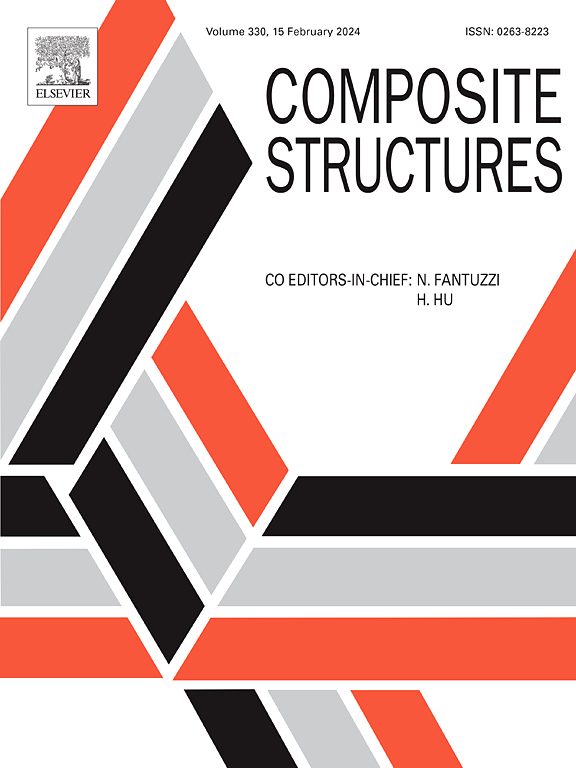Dynamic analysis of variable stiffness curved composite beams based on the inverse differential quadrature method
IF 6.3
2区 材料科学
Q1 MATERIALS SCIENCE, COMPOSITES
引用次数: 0
Abstract
Recent advances in composite manufacturing have catalysed the adoption of curved variable stiffness beams, promising enhanced dynamic performance for advanced applications in engineering. Curved variable stiffness beams transcend the limits of conventional composites offering new anisotropic coupling possibilities to tailor beam behaviour. However, the structural complexities introduced by variable stiffness effects in curved beams require computational tools that can capture non-classical responses characterising their behaviour. To address this problem, a numerical approach, rooted in indirect approximation techniques, is used to analyse the dynamic response of curved variable stiffness composite beams. By leveraging the merits of the emerging inverse differential quadrature method (iDQM), the study derives a new structural formulation for enhanced computational dynamic analysis of curved variable stiffness composite beams. The vibrational response of curved variable stiffness beams is governed by the interplay between geometric- and material-induced couplings due to curvature and point-by-point varying material distributions. Such interplay can be employed for design customisation, allowing for strategic adjustments in both geometry and materials to optimise performance. From the computational perspective, iDQM achieves over 90% reduction in degrees of freedom compared to one-dimensional and three-dimensional finite element method. Additionally, the variability in stiffness coefficients of variable stiffness composites introduces additional internal force terms, modifying the equilibrium equations in ways not observed in constant stiffness laminates. This feature creates opportunities to optimise material distribution and geometry by varying the stiffness along the beam’s length through variable fibre angle orientation and adjusting curvature to enhance dynamic performance over traditional constant stiffness beams.
求助全文
约1分钟内获得全文
求助全文
来源期刊

Composite Structures
工程技术-材料科学:复合
CiteScore
12.00
自引率
12.70%
发文量
1246
审稿时长
78 days
期刊介绍:
The past few decades have seen outstanding advances in the use of composite materials in structural applications. There can be little doubt that, within engineering circles, composites have revolutionised traditional design concepts and made possible an unparalleled range of new and exciting possibilities as viable materials for construction. Composite Structures, an International Journal, disseminates knowledge between users, manufacturers, designers and researchers involved in structures or structural components manufactured using composite materials.
The journal publishes papers which contribute to knowledge in the use of composite materials in engineering structures. Papers deal with design, research and development studies, experimental investigations, theoretical analysis and fabrication techniques relevant to the application of composites in load-bearing components for assemblies, ranging from individual components such as plates and shells to complete composite structures.
 求助内容:
求助内容: 应助结果提醒方式:
应助结果提醒方式:


